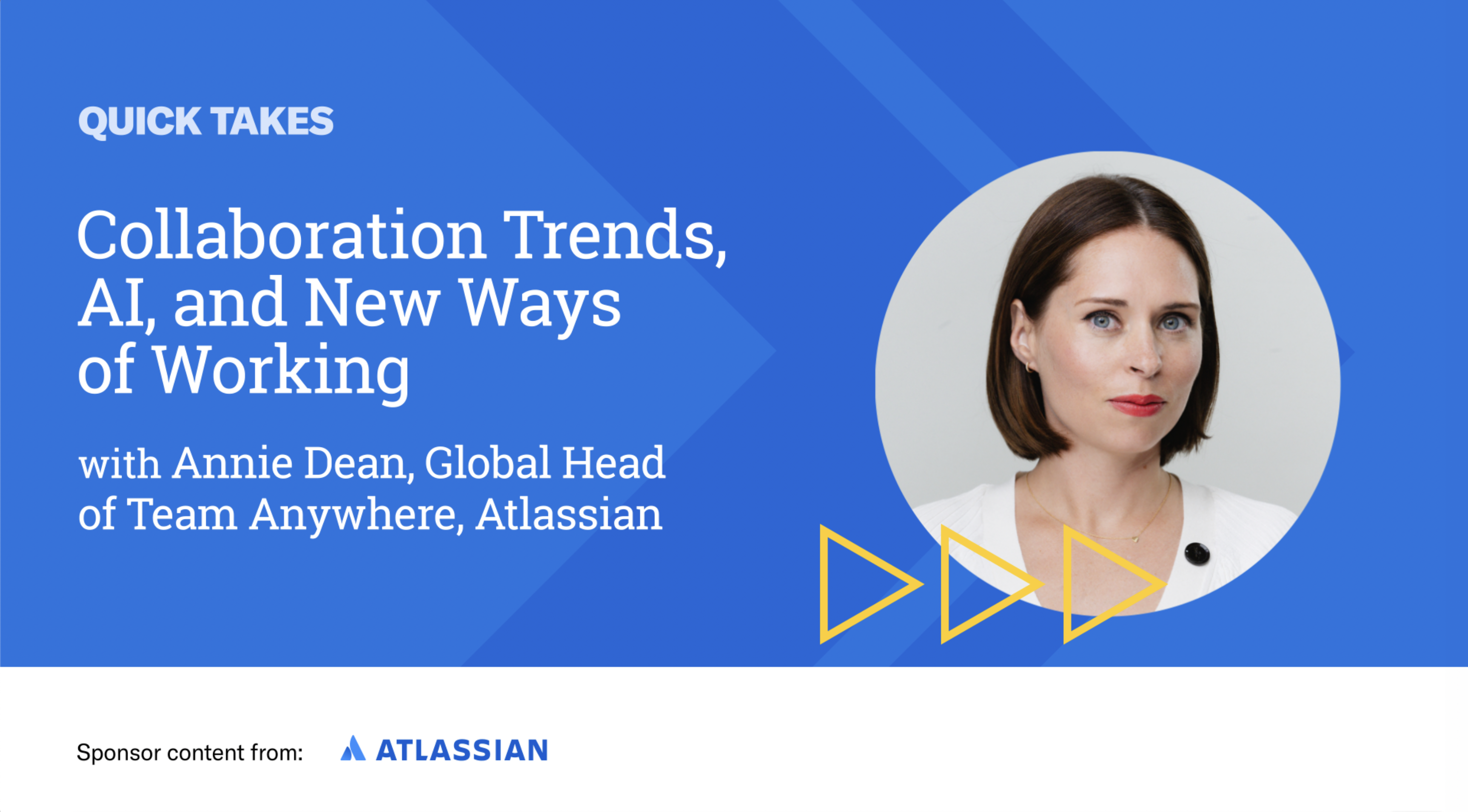Todd Pruzan, HBR
Welcome to the HBR Video Quick Take. I’m Todd Pruzan, senior editor for research and special projects at Harvard Business Review. Annie Dean is Atlassian’s Vice President of Team Anywhere, which researches and designs innovative practices for organizations whose employees decide where they work. Annie, thank you so much for being with us.
Annie Dean, Atlassian
Thank you for having me.
Todd Pruzan, HBR
So, Annie, what are the biggest challenges that you see teams facing with their own effectiveness?
Annie Dean, Atlassian
So the number one thing I think teams and executives need to hear right now is the idea that teams are busier than ever but accomplishing less. So at Atlassian, we build the software that helps teams collaborate, but we also spend a lot of time researching teamwork. And what we recently found in our research was that 65% of knowledge workers say that it’s more important to respond to notifications than it is to make progress on their top priorities. And similarly, when we spoke to Fortune 500 executives, 93% of them said their teams could accomplish the same amount in half the time if they could collaborate more effectively. To me, that means that we are in a how-to-work crisis, and teams need new practices and comfort with new types of technologies like AI in order to make more progress on what matters.
Todd Pruzan, HBR
So teams are working more and they are accomplishing less. How does a team break out of that cycle? What kinds of norms do they need to adopt to do that?
Annie Dean, Atlassian
Well, our research shows us that there are three kinds of behaviors that teams really need to embrace in order to be effective. And the first is that they need to replace most meetings. So teams are using meetings as a way to manage an enterprise worth of information.
And we need teams to stop playing telephone and start using tooling to make the right information visible and available to everyone. That means that they need to start using a culture of writing and get more comfortable with asynchronous communication in order to make that a reality. They can then use the time that they save by breaking free of meetings to do focused, creative, and difficult work, either individually or in groups.
The next thing is that teams really need to know what matters. And today, it seems like they don’t. Because when we spoke to Fortune 500 executives, they told us that only 24% of their teams are doing mission-critical work. And that’s just not enough.
To solve that, organizations need goal-setting habits and norms that make it clear to teams, as well as their collaborators, about what work matters right now. And similarly, individuals need to develop daily practices to understand what matters today, and how do I design my day to achieve that?
And then, finally, it’s really about core work. That third behavior is about progressing core work. Because right now, teams are focused way too much on talking about work and managing work than they are on actually doing the work. And we found that when teams at Atlassian reorganized their calendars to really be focused on the core priorities, instead of just showing up to their workday with a graveyard of requests for their time from other people and letting their calendar dictate their day, that 68% of them were more likely to make progress on their weekly and daily priorities. And that’s a big number.
Todd Pruzan, HBR
That is a big number. Can you give us any advice on how a team can unleash AI on its workflow and fix that?
Annie Dean, Atlassian
AI is definitely the topic to be unpacking right now, and I think there’s two things that I really want teams to understand about AI. First is that it’s about moving faster through tasks that could otherwise be automated, yes. But it’s also about being more creative.
So teams should absolutely be using AI to find, manage, digest, share information. And that means that teams need to stop doing individually saved files or using document titles to try to manage things and instead have a conversation with their AI assistant about what they’re looking for and how to use that information. But also, teams need to use it to be creative. So if you are kicking off a new project or building a new strategy, and your favorite sparring partner is on a call or otherwise unavailable, open up a conversation with AI.
This can lead to real-time feedback, sharing of ideas, and really creating a true conversation. Because what’s really special about this moment is that, for the first time, technology speaks our language. And that is a huge unlock.
Todd Pruzan, HBR
That is huge. Annie, thank you so much for your insights on bringing an experimental mindset to distributed work.
Annie Dean, Atlassian
Thank you.
To learn more about collaboration trends and new ways of working, check out Atlassian’s State of Teams 2024.

